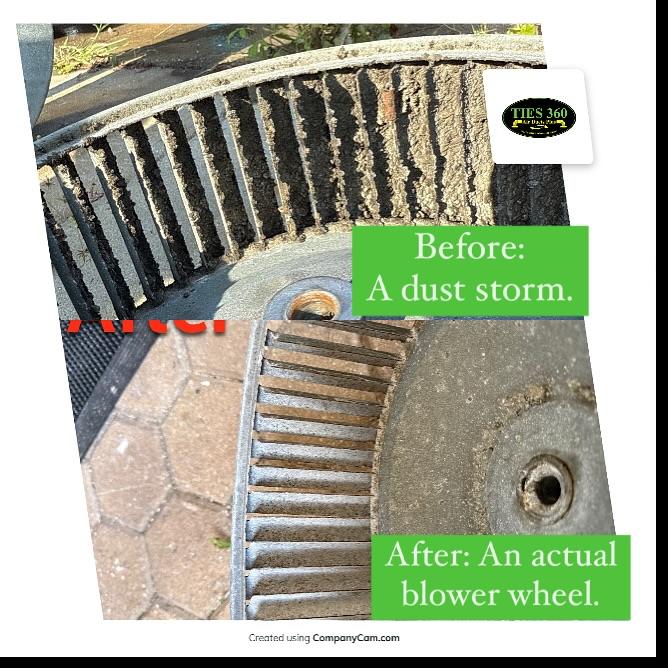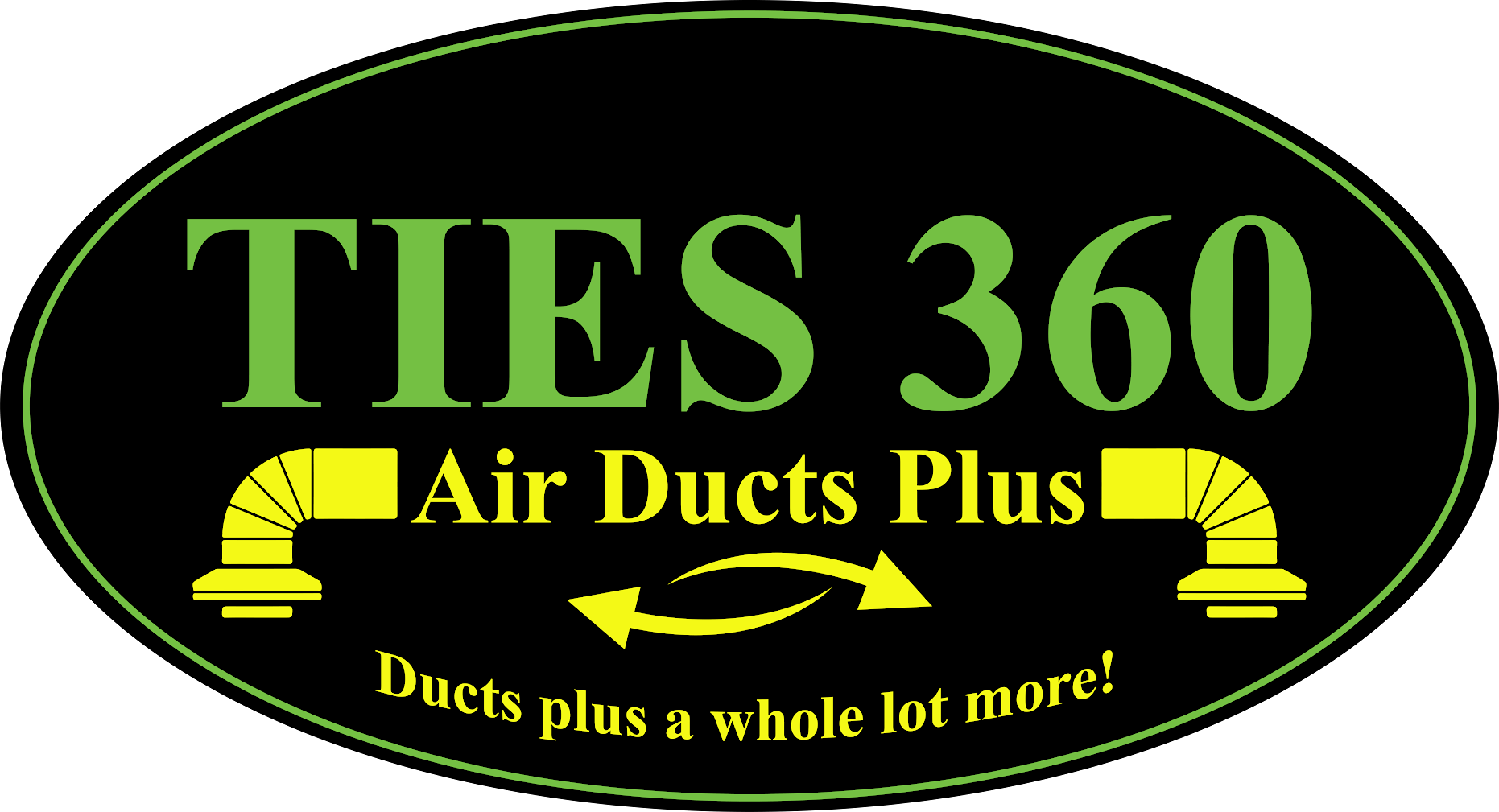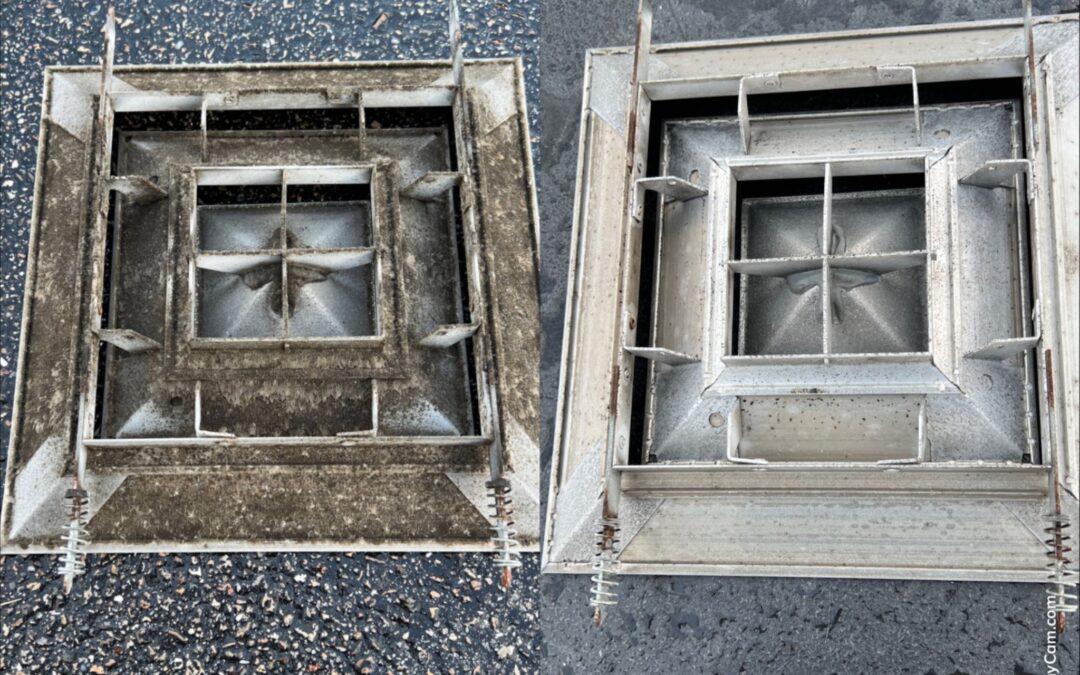As hurricane season approaches, your air ducts may take the biggest hit from storms and cause a myriad of issues, from indoor air quality issues to mold, and overall HVAC system damage. Understanding how hurricanes impact your ductwork is key to protecting your home and health.
Let’s break down how hurricanes contribute to hidden moisture problems and what you can do to prevent costly damage.
How Hurricanes Can Cause Hidden Moisture in Your Air Ducts

While you’re checking for roof leaks and siding damage after a storm, your air ducts might be silently collecting moisture. Unlike visible damage, this is harder to detect and can lead to mold growth, reduced HVAC efficiency, and even potential health problems if left unchecked.
How Does Moisture Get into Air Ducts During a Hurricane?
Wondering how moisture can get trapped in your air ducts during a hurricane? Keep reading.
Direct Water Intrusion
Heavy rain and strong winds can drive water into unexpected places. If your ductwork has even small cracks or gaps, water can seep in. Ducts running through attics, crawlspaces, or basements are especially vulnerable if the surrounding structures are compromised during a storm.
Increased Humidity Levels
Hurricanes bring exceptionally high humidity. Even without direct water entry, that extra moisture in the air can condense inside uninsulated or poorly sealed ductwork. Over time, this creates the perfect environment for mold to grow and spread through your HVAC system.
Structural Damage
Storm damage to your roof or walls can leave ductwork exposed. Once that happens, water and debris can infiltrate the system, increasing the chance of contamination and long-term repair costs.
Consequences of Hidden Moisture in Air Ducts
Moisture inside the duct system leads to more than mold. It can reduce airflow efficiency, raise utility bills, and strain your HVAC components. Mold spores circulating through the vents can worsen allergies and respiratory issues, especially for families with children or elderly members.
The longer the moisture sits, the more damage it causes. Damp conditions also encourage rust on metal ductwork and HVAC components, which can lead to premature system failure if ignored.
Common Signs of Moisture Problems in Air Ducts
You don’t always need to open the ductwork to know something’s wrong. Watch for these common signs of trouble:
- Musty or Unusual Odors
Persistent odors, especially musty or earthy smells coming from vents, often hint at mold or mildew developing somewhere along the duct lines.
- Increase in Allergy Symptoms
Sneezing, coughing, itchy eyes, or worsening asthma symptoms indoors may indicate that mold spores are being circulated through your HVAC system.
- Visible Mold Around Vents
Sometimes the problem makes itself visible. If you spot mold near supply or return vents, it’s a sign your ducts need immediate attention.
How to Protect Your Air Ducts During a Hurricane
Protecting your air ducts from moisture damage starts with a few smart preventative steps.
Regular HVAC Maintenance
Have your HVAC system inspected by professional air duct cleaners at least once a year, twice in areas like Florida that are prone to hurricanes. This routine maintenance can catch early signs of water damage or mold growth before they become serious.
Proper Sealing and Insulation
Ensure your ductwork is properly maintained and sealed, especially in attics, crawlspaces, and basements. Check that you don’t need duct modification or complete replacement as well. Adding insulation can also reduce the risk of condensation forming inside the ducts during high humidity.
Install Dehumidifiers
Battling humidity starts with managing your indoor air quality. Installing a whole-home dehumidifier helps keep moisture levels consistent, especially during storm season, and maintains healthy indoor air quality.
Post-Hurricane HVAC Inspection
After any major storm or hurricane, schedule a professional, post-hurricane HVAC inspection to look for hidden damage or moisture buildup. Addressing issues early helps avoid more expensive repairs and keeps your indoor air healthy.
When to Call in the Professionals
While basic maintenance can prevent some problems, serious moisture or mold issues need professional attention. Choose an HVAC service provider with hurricane-season experience and strong local reviews. At Ties360, our professionals know how to spot hard-to-find damage and recommend the right solutions to protect your system long-term. Contact us today for an inspection and possible air duct cleaning measures.
FAQs
How can hurricanes cause moisture to enter my air ducts?
Hurricanes can lead to moisture in air ducts through direct water intrusion caused by heavy rain and strong winds, increased humidity levels, and structural damage to your home.
What are the signs of moisture problems in air ducts after a hurricane?
Common signs include musty or unusual odors coming from vents, an increase in allergy symptoms like sneezing and itchy eyes, and visible mold around vents.
How can I prevent moisture damage in my air ducts before a hurricane hits?
To prevent moisture damage, ensure proper sealing and insulation of ductwork, clear debris around your home, and secure outdoor HVAC units. Regular maintenance and the installation of dehumidifiers can also help manage indoor moisture levels effectively.
When should I call a professional for moisture issues in my ductwork?
You should call a professional if you notice persistent musty odors, significant increases in allergy symptoms, or visible mold, as these are indications of serious moisture or mold issues. An experienced HVAC technician can provide a thorough assessment and effective solutions.
Wrapping Up
Moisture in your ductwork is a quiet threat that often shows up after hurricane season, when it’s already done damage. By recognizing the signs early and taking preventative steps before and after a storm, you can protect your HVAC system, reduce repair costs, and improve indoor air quality.
Stay one step ahead this hurricane season. Schedule a post-storm duct inspection or preventative maintenance check with Ties360, a trusted HVAC professional to keep your home safe and comfortable all year round.

